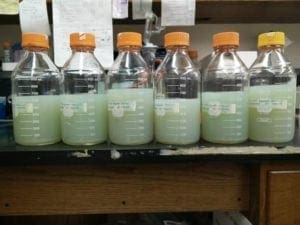Lab Autoclave Function Primer: Intro to Air Ballast Systems
By: Priorclave North America
Category: Lab Autoclaves

In general, autoclaving sealed flasks is a very, very bad practice. But that isn’t to say it’s impossible. If you need to sterilize sealed containers, then you need to make sure you have a special autoclave function to do it safely: an “air ballast” system.
What’s an “Air Ballast” Autoclave Function?
All steam autoclaves use heat and pressure to sterilize their contents. If containers in the autoclave are open or loosely covered with foil, then both the autoclave chamber and its contents cool and return to room temperature and pressure at roughly the same rate.
But if the containers are sealed, it’s highly likely that the chamber will cool and depressurize much more quickly than the load—creating the potential for the sealed containers to explosively rupture. An air ballast system uses compressed air to ease this transition. As the chamber vents hot steam, the air ballast system floods it with cool pressurized air. This fresh air cools the load while equalizing the pressure of the sealed flasks and chamber. The cooled chamber and load are then permitted to gently return to ambient pressure.
Other Benefits of an “Air Ballast” Autoclave Function
An air ballast is good for more than just explosion prevention—especially if you run lots of liquid loads. Although most standard lab autoclaves can prevent boil over (provided you follow good practices), you still have to contend with a good deal of evaporation. An air ballast system minimizes evaporation and prevents boil over (unless you flagrantly flaunt The Rules).

autoclaving and liquid loss
An air ballast system also makes it significantly easer to process some delicate items (e.g., contact lenses, pouches of liquids or gels, etc.) without warping the containers during cooling.
But not all air ballast systems are created equal. You don’t want to take your sterile media load—even one in sealed containers—and immediately bathe it in a concentrated blast of a random sampling of all of the spores, volatile compounds, and other contaminants floating around your lab. Priorclave air ballasts include a 0.2-micron filter, a pressure regulator, and oil and water traps, to help assure that you aren’t introducing a new and mysterious contamination source to your lab practices.

